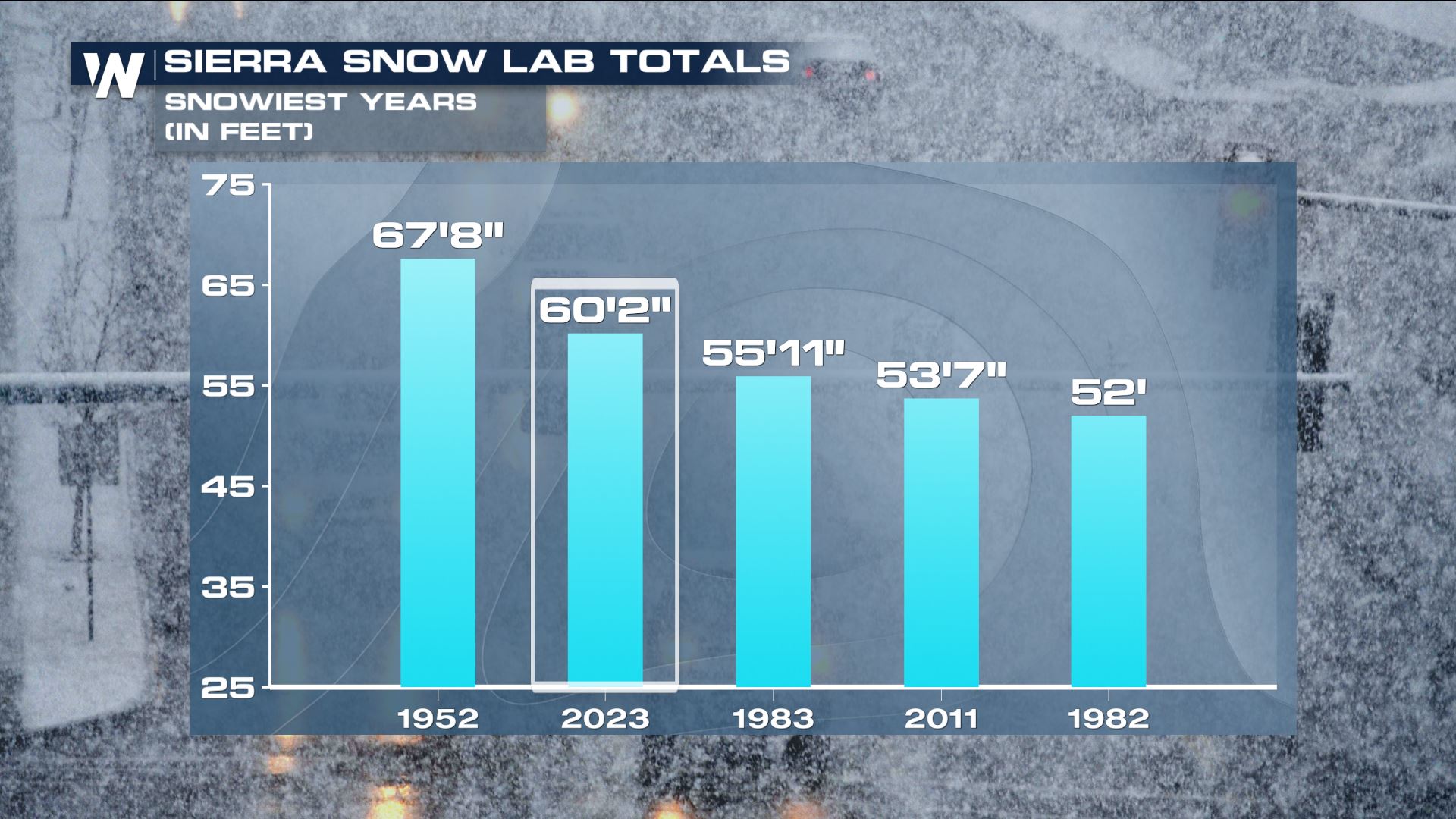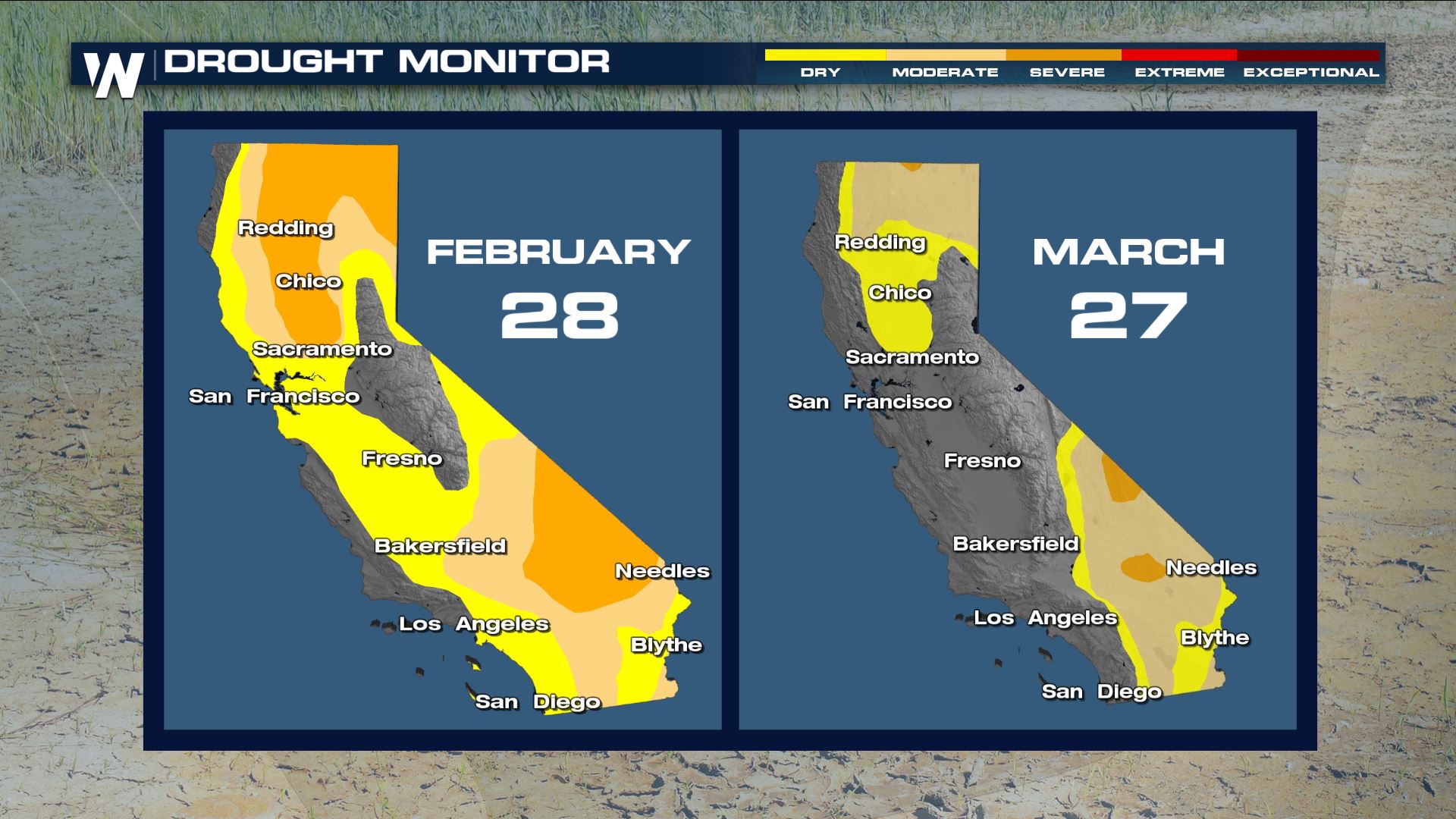California Snowpack - More than 200% of Normal Headed into the Spring Months
The California Department of Water Resources conducted a monthly snow survey on April 3, to measure snowpack depth and water equivalent in the Sierra Nevada mountains. Numerous Atmospheric Rivers have lead to powerful and deadly snowstorms along the West Coast, along with flooding rain and severe weather in the lower valleys. The previous snow survey of March 2023 revealed an above average snowpack for the state, which is a theme that continues in early April with the latest results. April 1st is historically when snowpack is at its greatest in the Sierra, before Spring melt and rains start to diminish the "frozen reservoir". Still, the snowmelt will drain into California's reservoirs as well as ground water, helping to replenish the drought stricken soils.
Snow surveys done by the CA DWR are at Phillip's Station, CA, which is to the south of Lake Tahoe. The University of California Berkley keeps a record of snowfall in Soda Springs, CA which is roughly 40 miles to the north along I-80. The Soda Springs survey has been conducted since the 1950s and so far 2023 is on par to be the second snowiest on record with over 58 FEET of snowfall since October 1, when the Water Year in California begins. This is over double what the location sees in any typical year.

